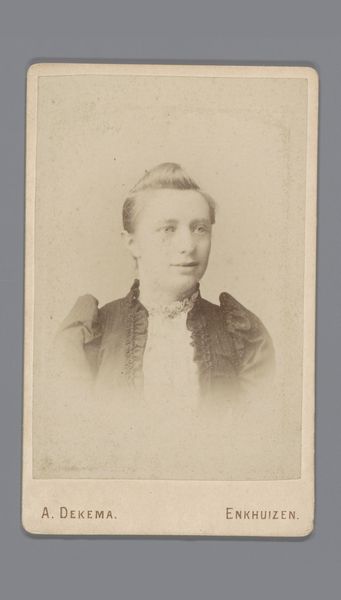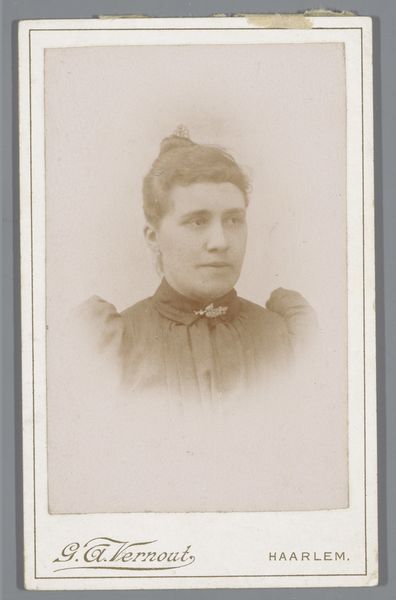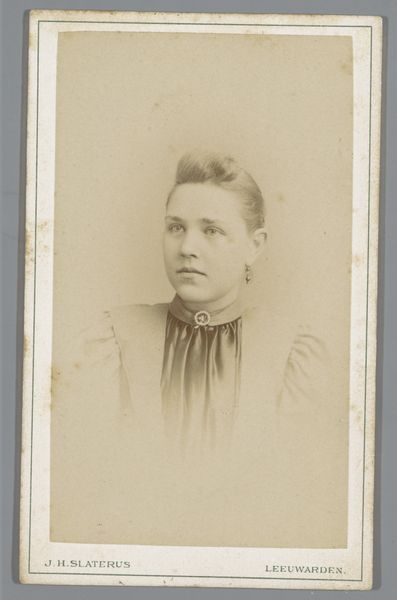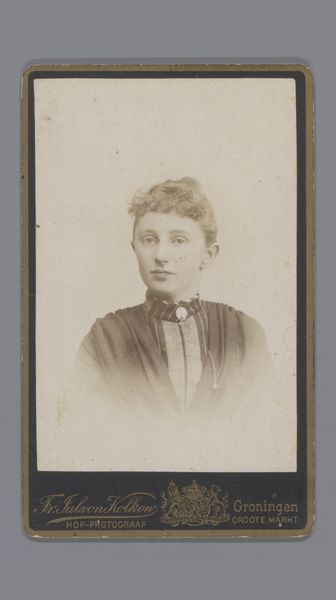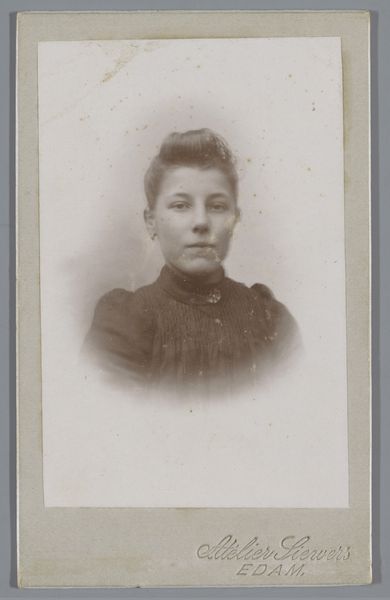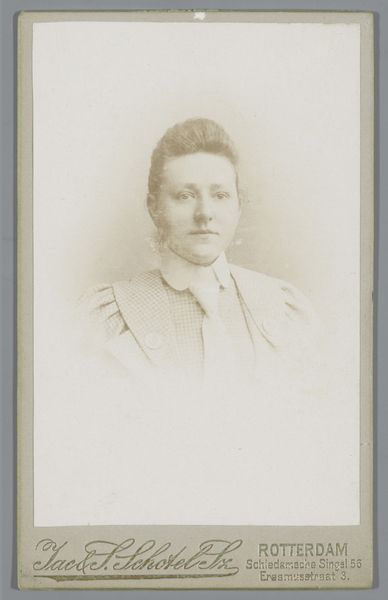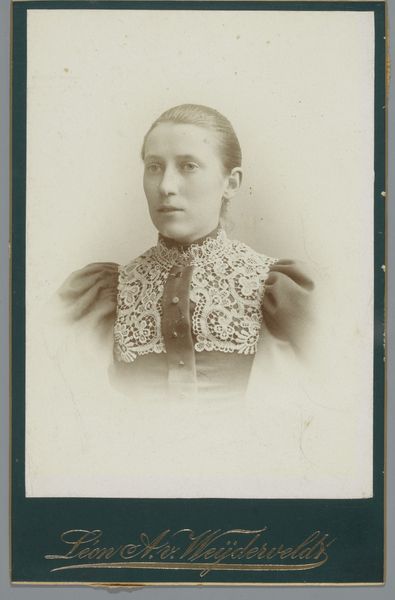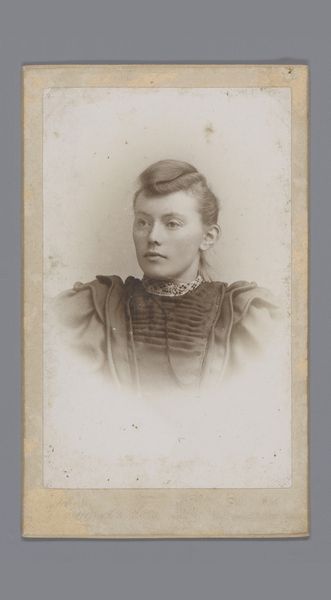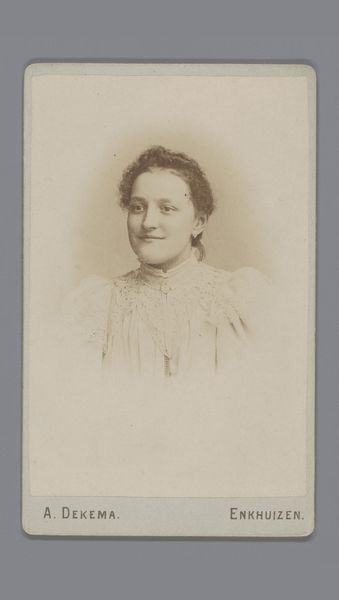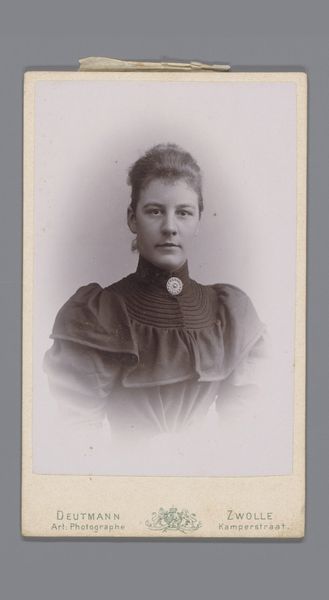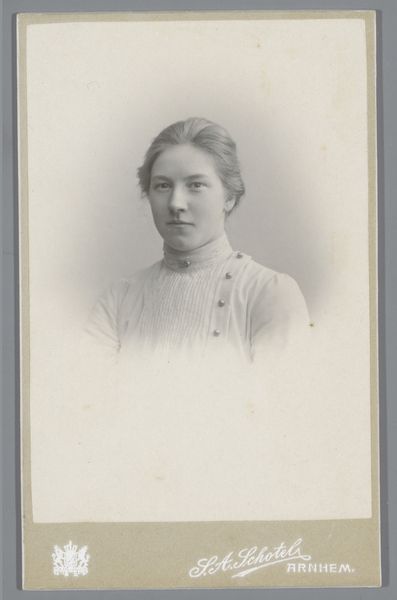
photography
#
portrait
#
photography
Dimensions: height 103 mm, width 64 mm
Copyright: Rijks Museum: Open Domain
Editor: Here we have Albert Dekema's "Portrait of an Unknown Young Woman," taken sometime between 1880 and 1896, a photograph from the Rijksmuseum. It's quite a simple composition, a head and shoulders shot in sepia tones. The subject's gaze is very direct and unsmiling. What strikes you most about this piece? Curator: It’s fascinating how a seemingly simple portrait can tell us so much about the cultural landscape of its time. Consider the institutional power at play here. Photography, by the late 19th century, was becoming increasingly accessible, moving away from the exclusive domain of the wealthy. But, were portraits such as these viewed differently, perhaps even deemed less ‘artistic’ than painted portraits? What do you think fueled its burgeoning popularity across different social classes? Editor: Probably affordability and access, right? It made portraits accessible to those who couldn't afford paintings. Curator: Precisely! But it’s also the rise of a certain visual culture. Consider how the formal pose, the clothes, even the somewhat solemn expression, contribute to constructing a particular kind of identity. Are we looking at an attempt to mimic the perceived respectability afforded by painted portraiture within a photographic medium? Think of the social implications behind choosing to represent oneself in this way. Editor: So, the photograph becomes less about capturing an individual and more about conforming to social expectations. Curator: Exactly. Also, the question of who has the authority to represent whom becomes crucial. In this case, how might Dekema’s role as the photographer affect our understanding of the sitter's portrayal? This photograph offers insight into how the emerging photographic industry helped democratize representation while simultaneously reinforcing prevailing social norms. What is most interesting is that it opens up a window onto complex social negotiations regarding class, gender, and self-representation within the evolving visual sphere of the late 19th century. Editor: That’s given me a lot to think about. It really is so much more than "just" a photograph. Curator: Agreed. And perhaps thinking about the portrait itself can act as a portal into deeper social understanding.
Comments
No comments
Be the first to comment and join the conversation on the ultimate creative platform.
